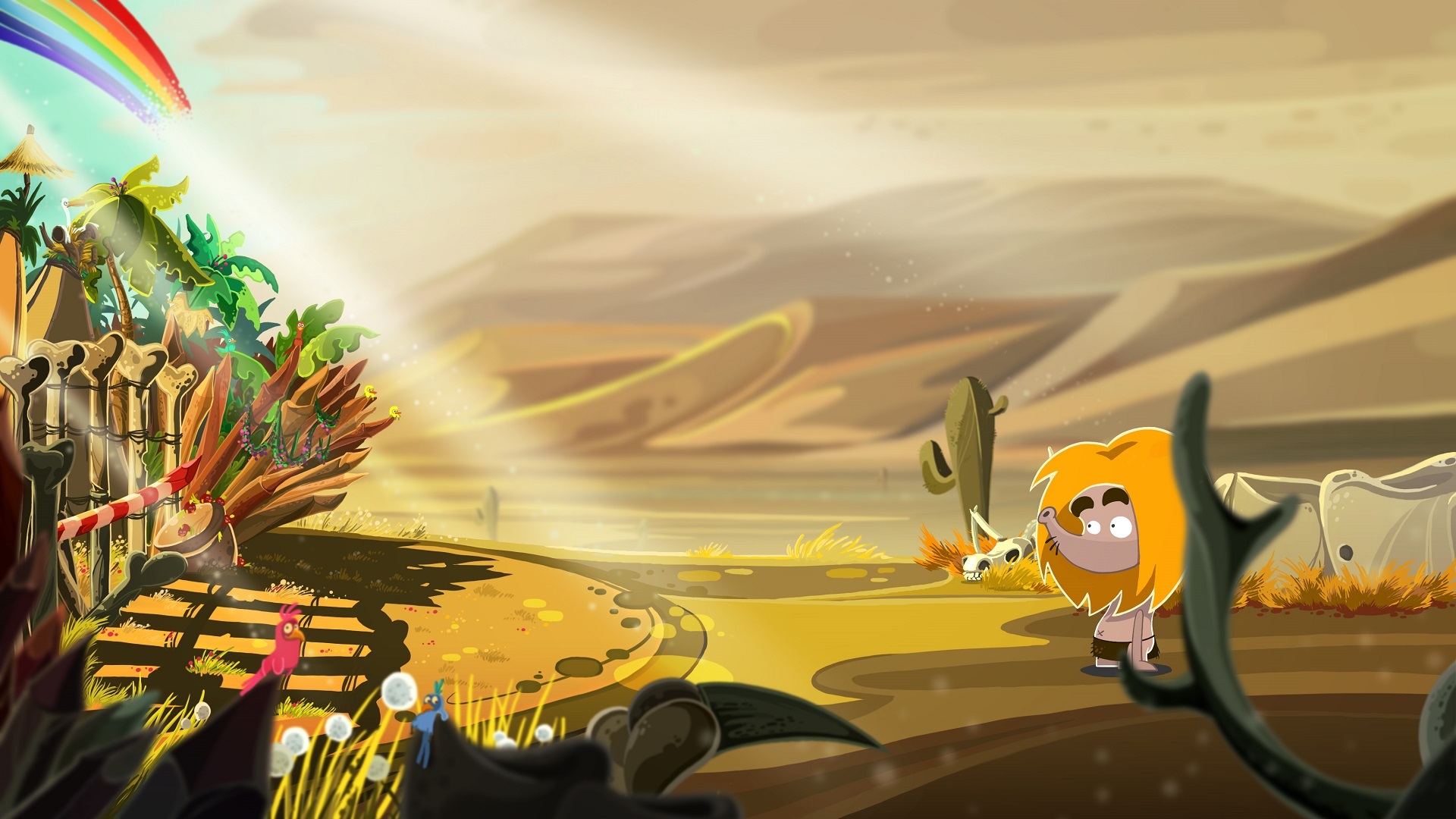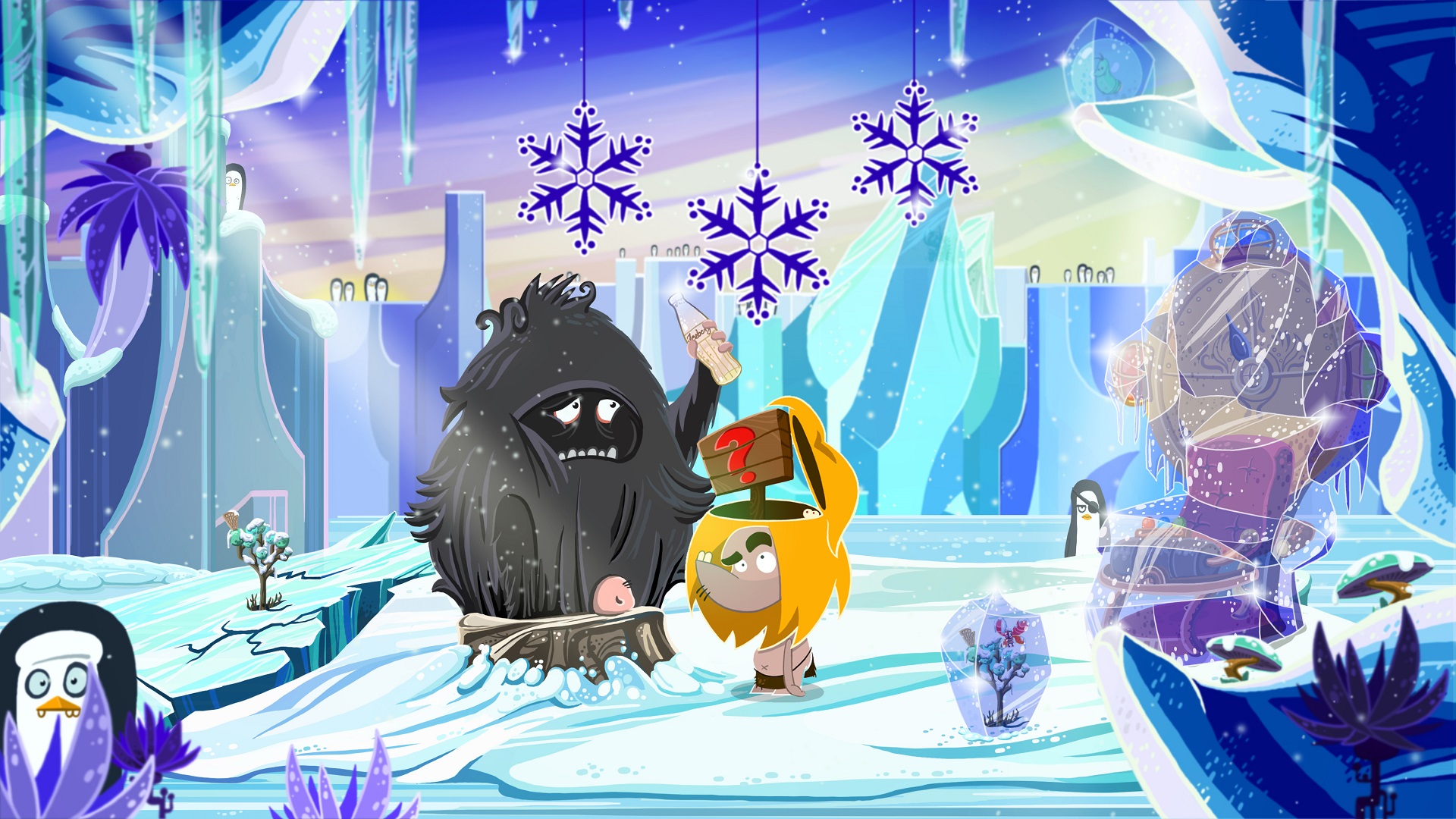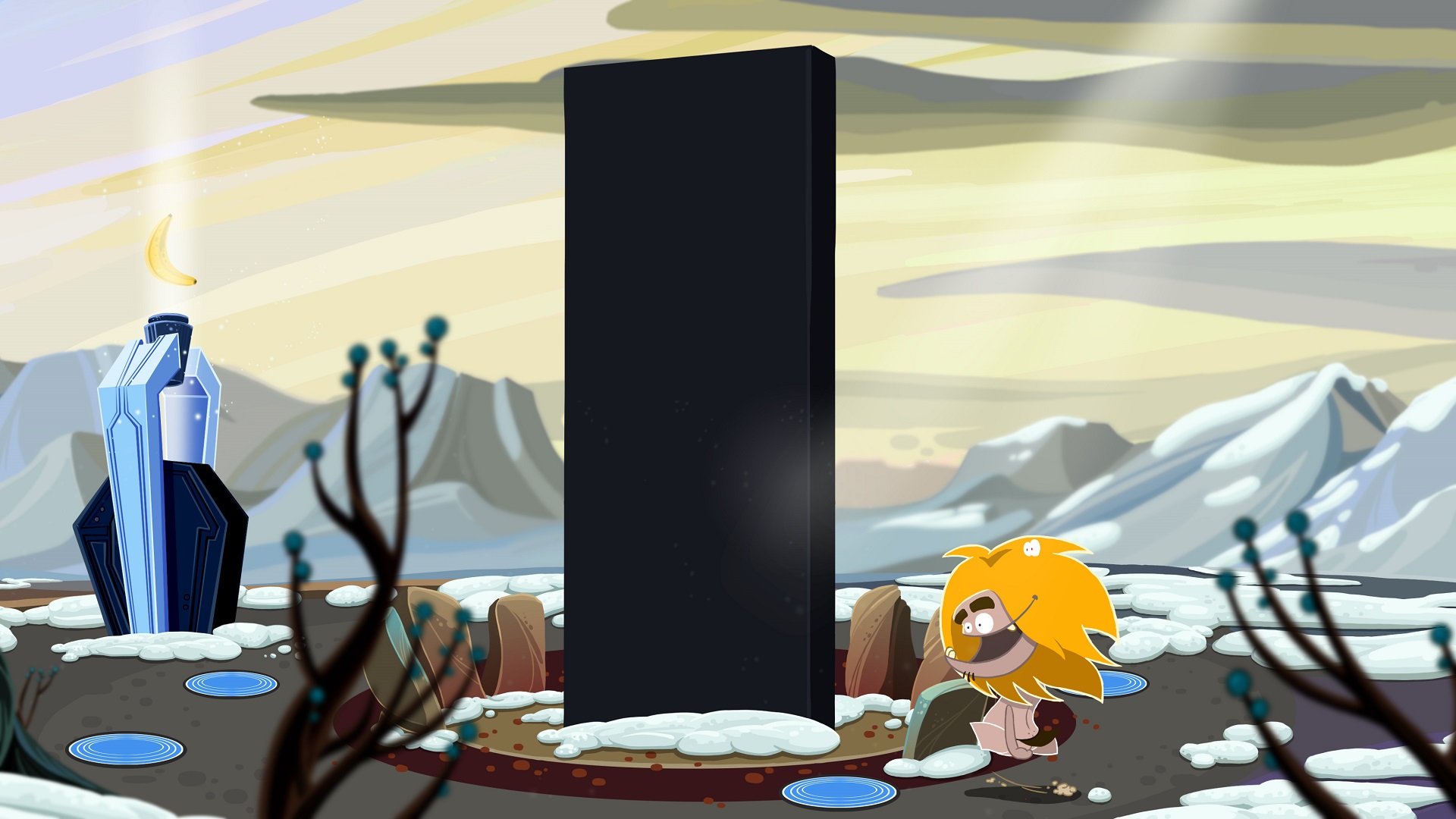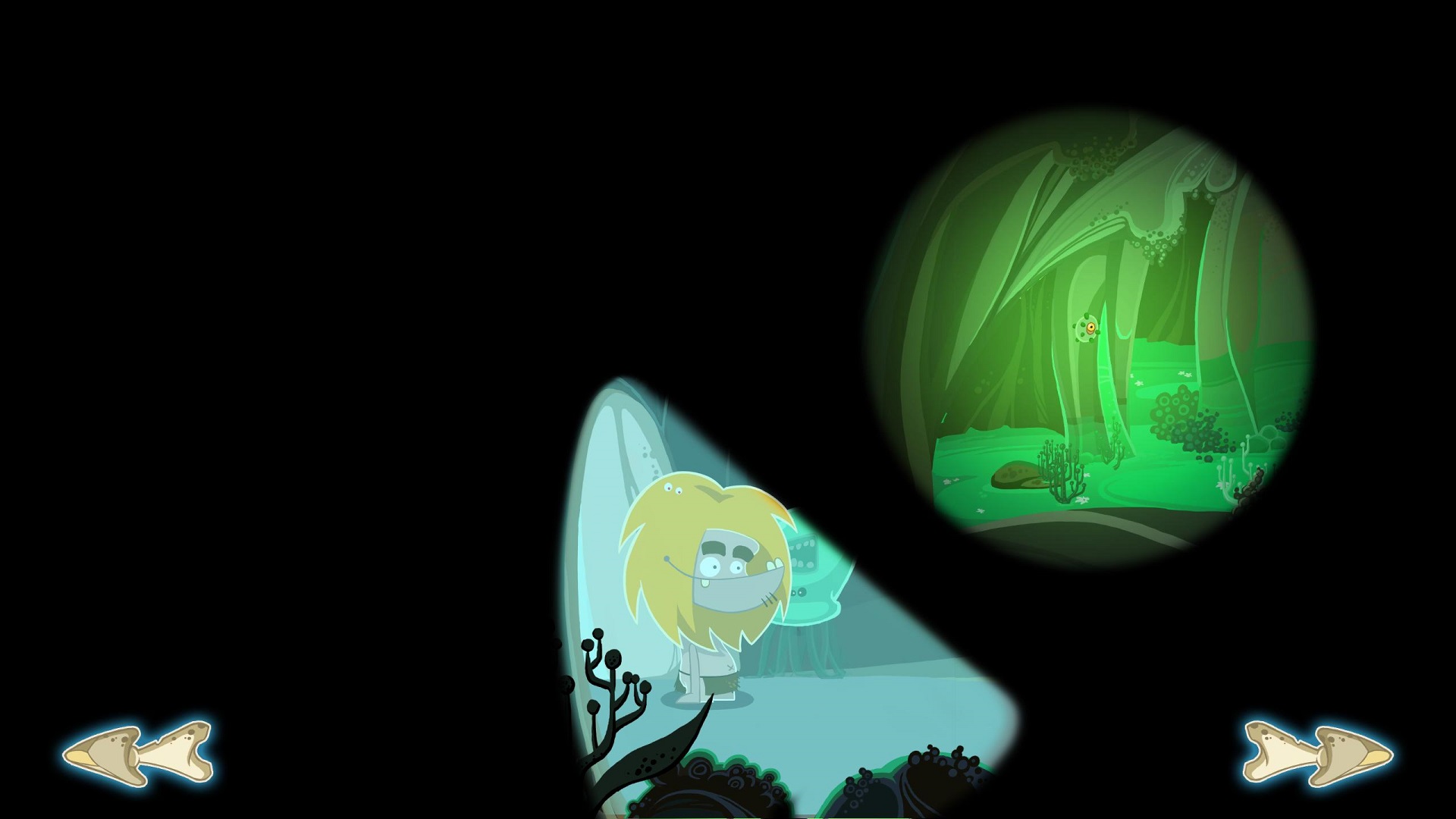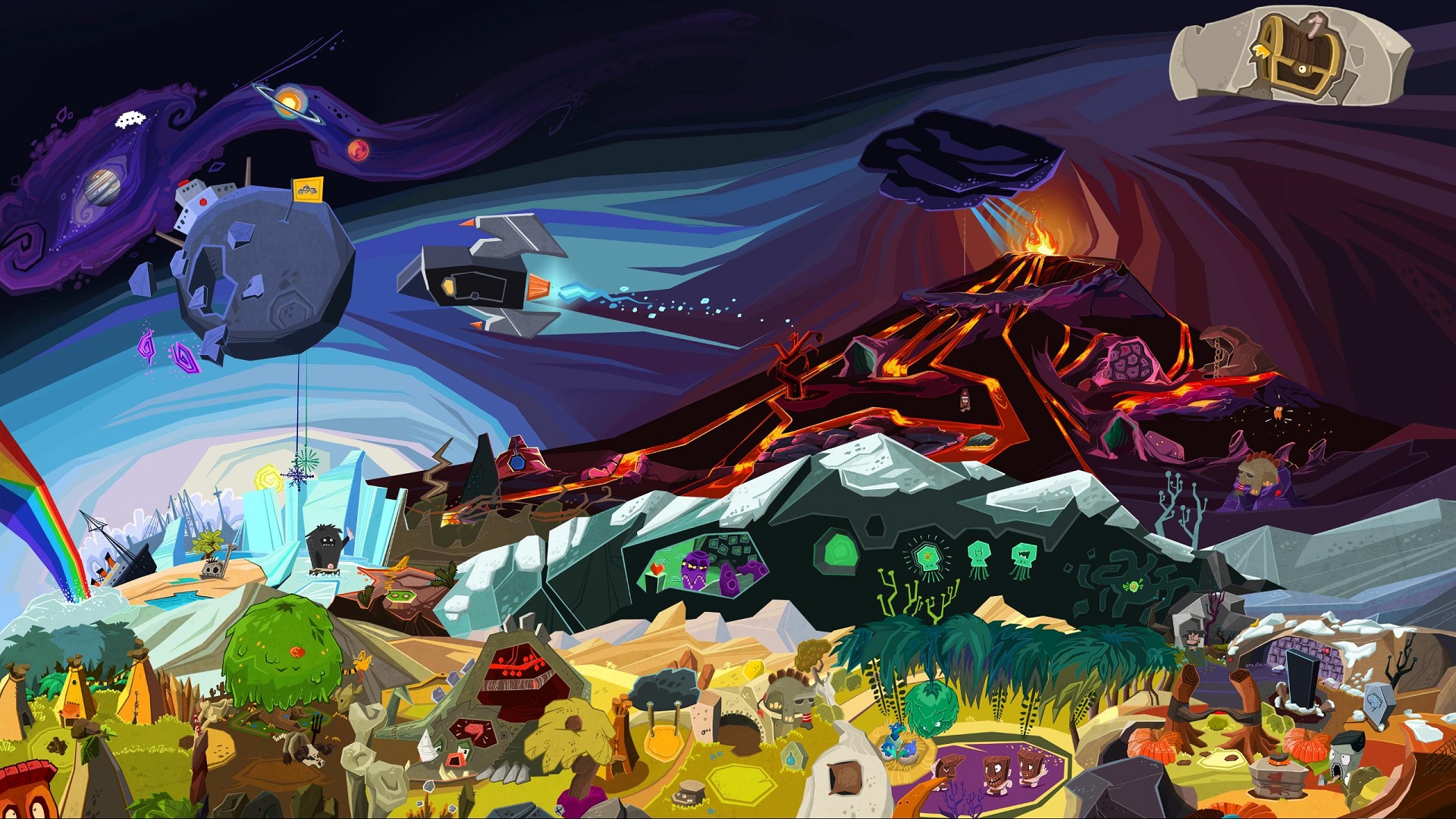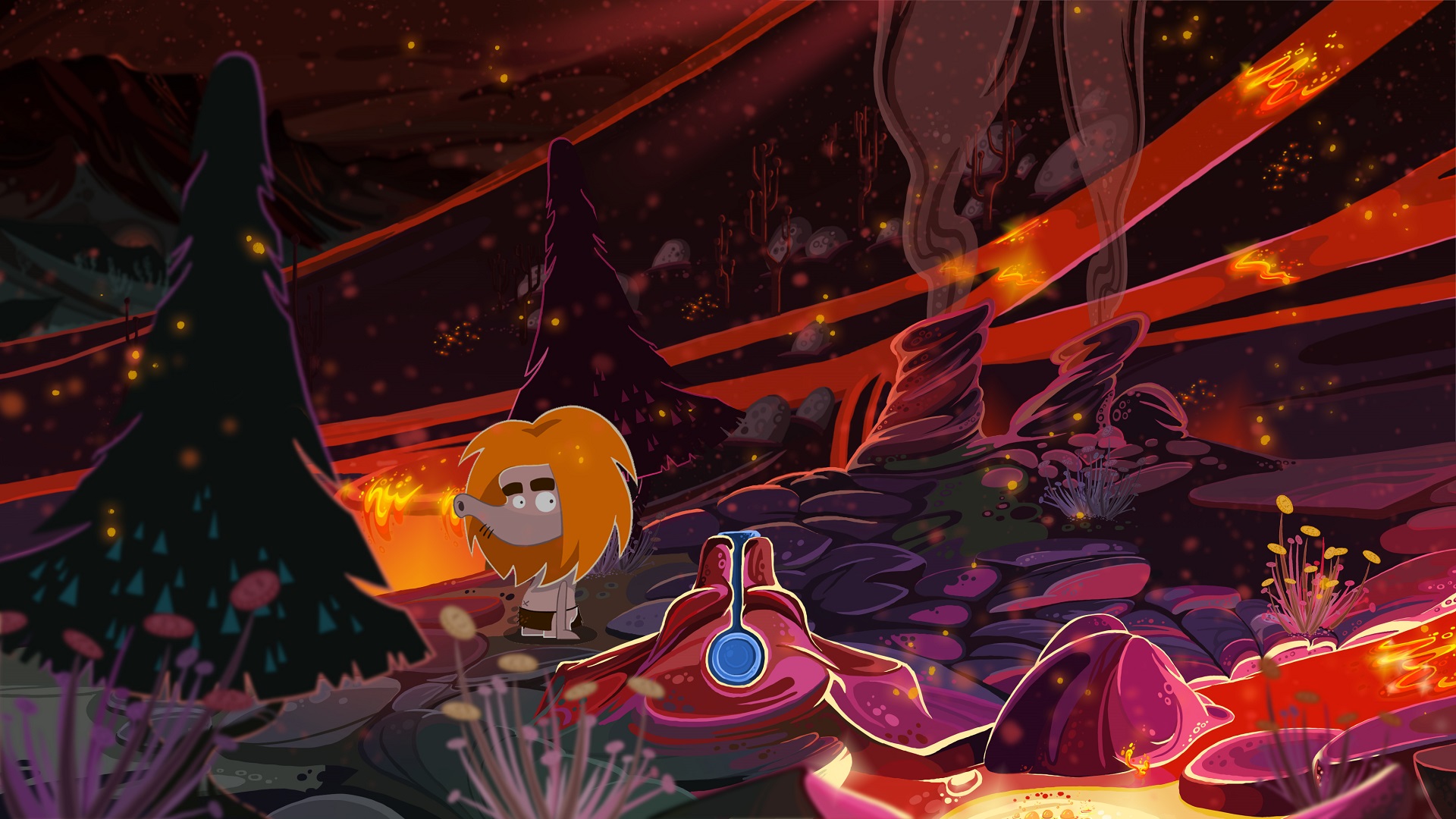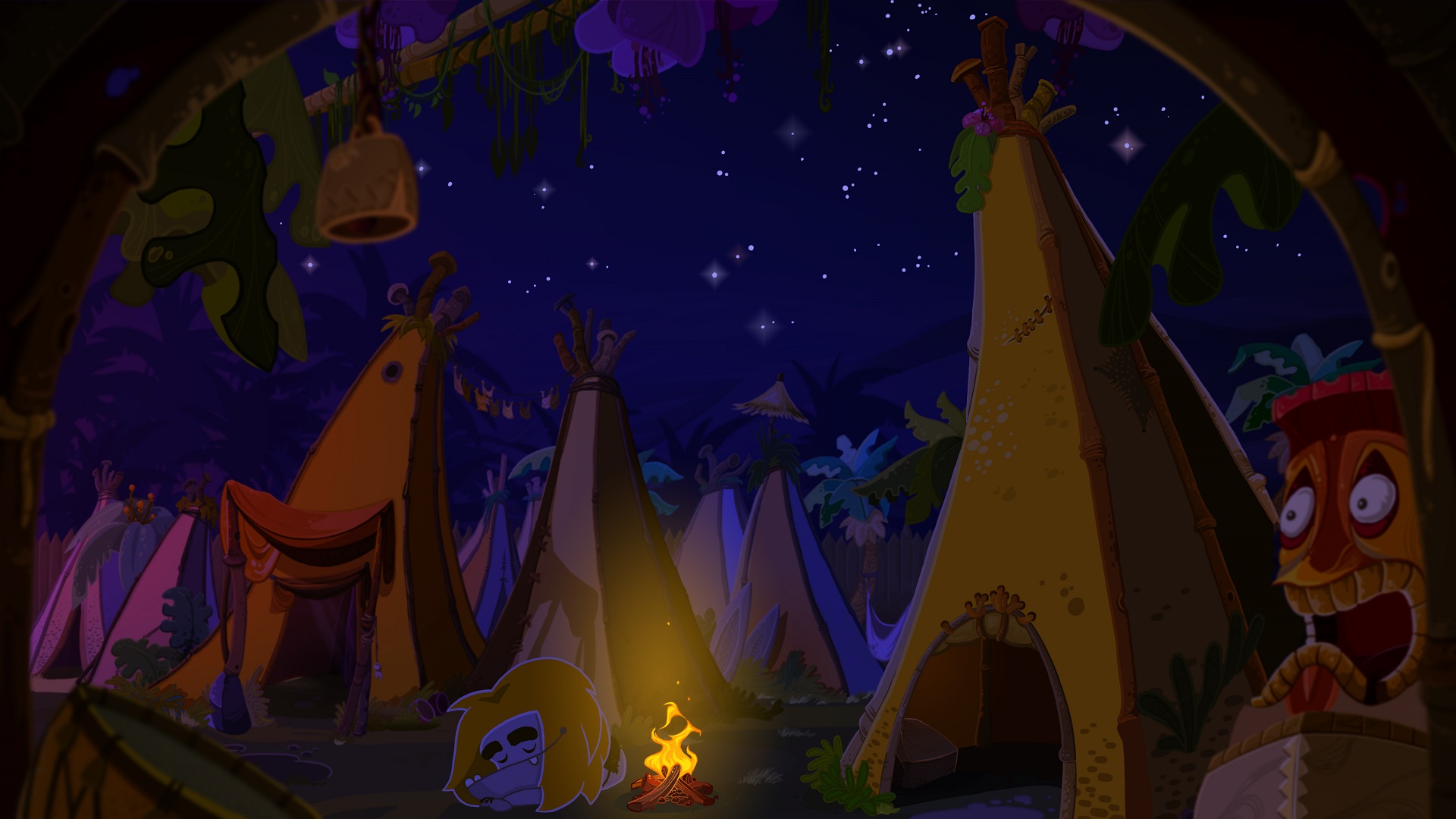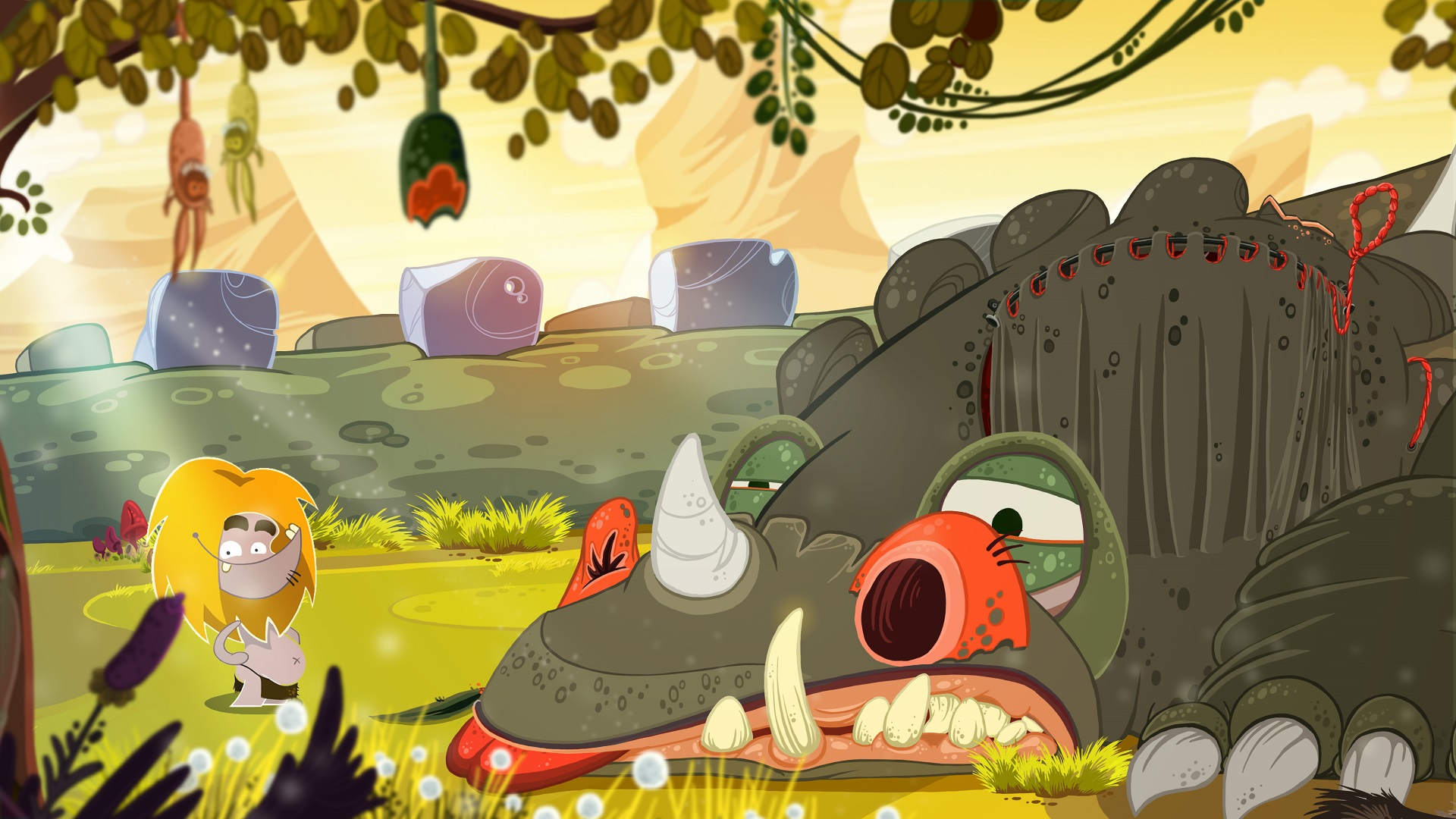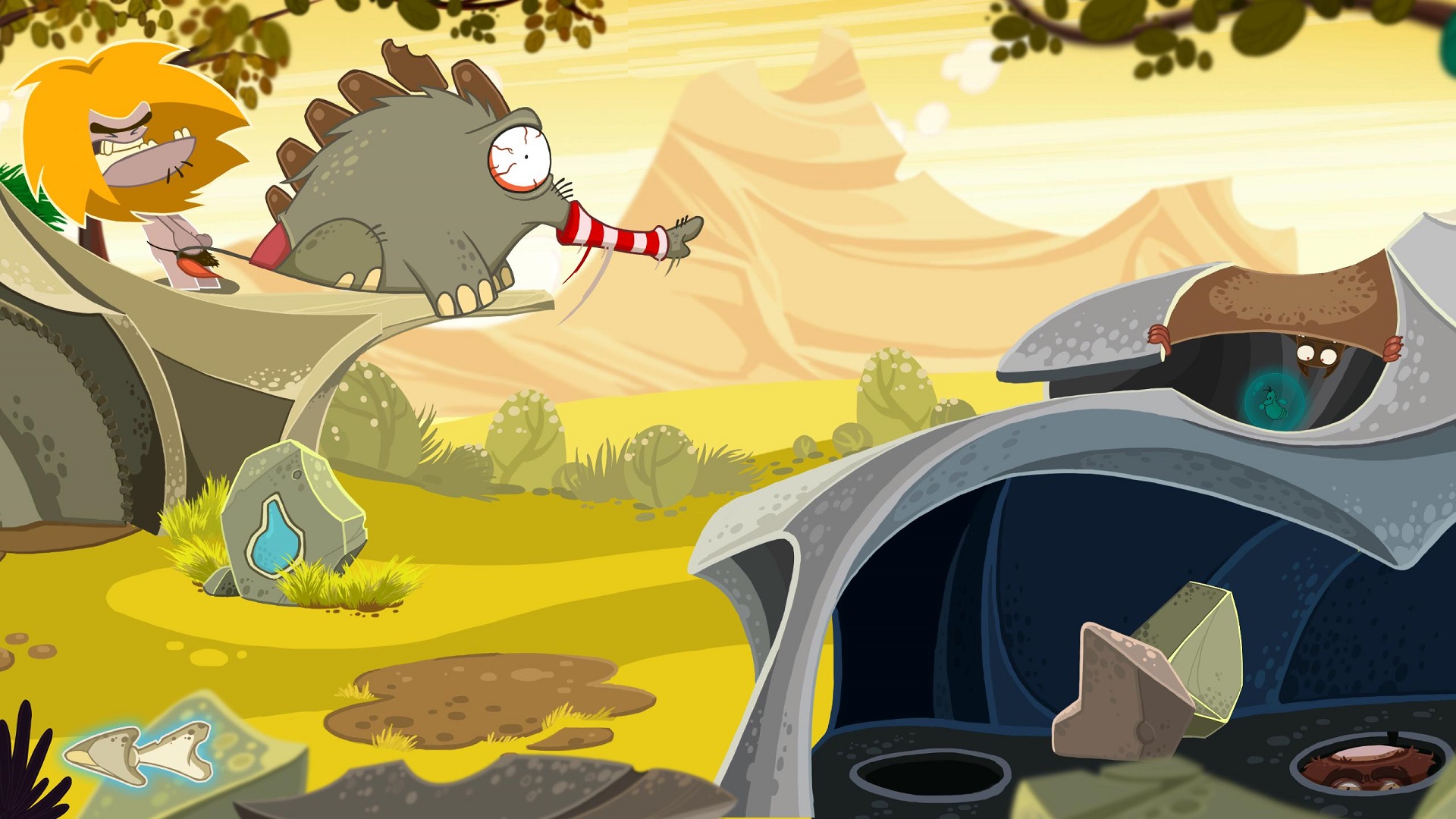Fire: Ungh’s Quest
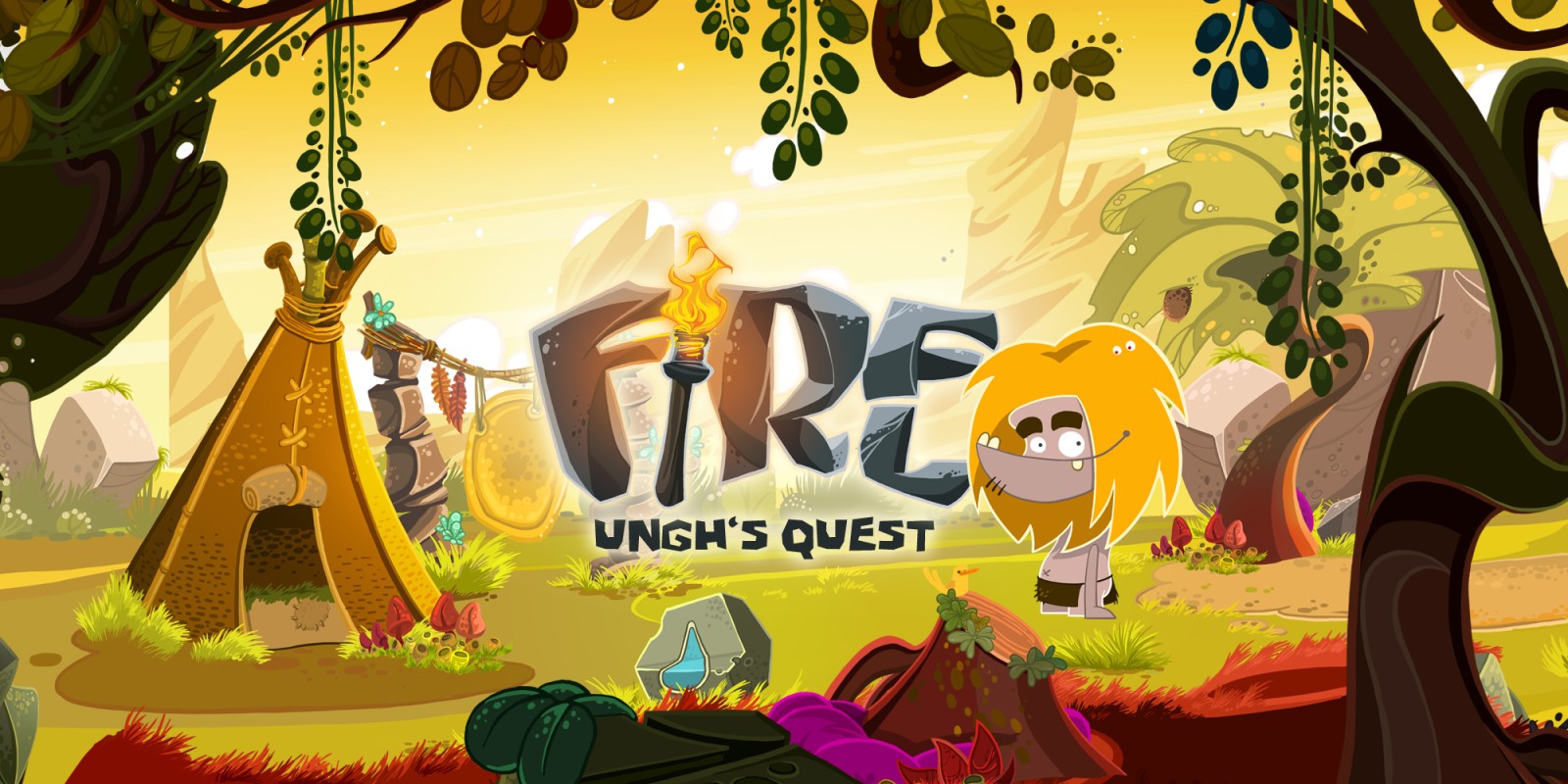
In the time before time, when videogames were not even imaginable in the undeveloped minds of our knuckle-dragging ancestors, the ability to problem solve was what separated the weak from the strong and determined who would survive. Only those with the keenest senses and the sharpest wits would adapt to the challenges ahead of them and live to fight another day, and in that vein Daedalic Entertainment have brought the hilarious Neanderthal point-and-click puzzler Fire: Ungh’s Quest to Nintendo Switch, to see if we’re smarter than a loincloth wearing caveman.
At A Glance
| Scores | |
| Visuals | 8 /10 |
| Sound | 6 /10 |
| Gameplay | 7 /10 |
| Overall | 7 /10 |
| Positives | + The cast of characters are fantastically drawn and incredibly engaging |
| + Full of humour and silliness | |
| + Solid touch screen support for Handheld Mode | |
| Negatives | – Relatively straight forward puzzling for fans of the genre |
| – Some of the puzzles are a little too wacky, and lack logic | |
| – You’ll want it to last longer than it does | |
| Launch Price | £12.99 |
| Our Playtime | 2 hour 40 minutes |
| Available On | Nintendo Switch, PC |
Fire: Ungh’s Quest is a point-and-click puzzler set in the depths of the Stone Age where players control the titular Ungh, a dopey caveman on a mission of redemption. Ungh, you see, is charged by the town elder with watching over the village’s sacred fire overnight, and when he falls asleep on watch and allows it to go out, he’s kicked out of the village and sent into the bizarre landscape to retrieve a new fire from a far off volcano.
What follows is a bonkers adventure that sees Ungh travel across great plains, through caves and forests, into space and even through time in order to bring fire back to his village. Along the way he has to overcome all manner of creatures and pitfalls, using nothing more than his incredibly limited wits and a myriad of weird and wonderful items he finds as he scratches around in the dirt. Ungh moves through the levels by blundering through the puzzles and eventually catching a firefly that opens a portal to the next level, and to make things a little more challenging, three coins are also hidden in each level that can only be found by taking specific actions or completing tasks in a certain order. The coins are entirely optional, but do allow you access to a ‘behind the scenes’ menu where you can admire some of the concept artwork and making of shots that are really fun for a game with such a fun art style.
I got started with Fire in Handheld Mode and was pleased to find that Daedalic Entertainment had made good use of the Switch’s touchscreen capabilities. Moving Ungh around was as simple as tapping on the edge of the screen or on a point of interest, and if you were unsure what items you could interact with, there’s a handy button at the top corner of the screen that highlights all the clickable items when pressed. Things are nicely spaced out on screen too, so there aren’t any fiddly moments, and the whole process of playing is simple and easy.
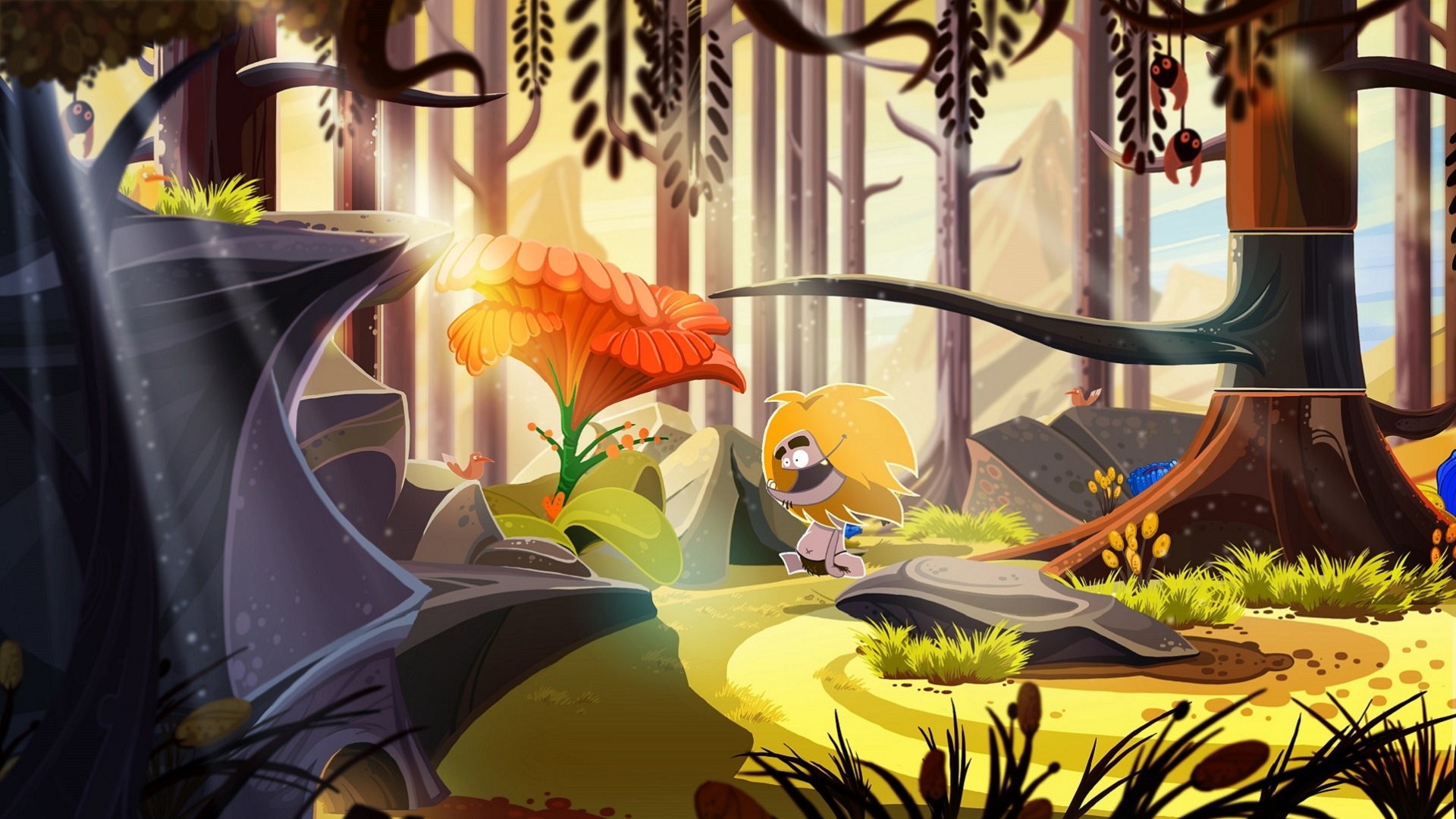
In Docked Mode, the controls initially caused me a little confusion, as there’s nothing to explain exactly what the buttons are. Effectively the gyros in a single joy-con allow you to play the game with motion controls, a la the Nintendo Wii, and I have to say that they perform really nicely. One wrinkle that I did discover was that if you move straight from Handheld to Docked Mode, the Switch still allows two joy-cons to be connected and they try to override one another as you play, resulting in the cursor constantly being recentred each time you use one joy-con or the other. It’s hardly earth shattering stuff, but in a control system that only requires point and click, left or right on the control stick to change screens, and a button press for hints, why even allow for two joy-cons to be connected at the same time and add any confusion?
Moving into the meat of the game, I thoroughly enjoyed the visuals in Fire, which is presented in a simple but vibrant cartoon style, where everything has been drawn in a playful style and coloured in a way reminiscent of a children’s book. The art style does a lot to make the playable areas feel much bigger than just a few screens each, and links them together as part of a wider world through the effective use of scale and palette in the backgrounds. Fans turned on by hyper realistic graphics won’t get a lot out of Fire in the visuals department, but fans of more silly comic book series will thoroughly enjoy what Daedalic Entertainment have put together. The sounds, while solid, aren’t nearly as memorable, and don’t do a huge amount to enrich the gameplay experience. And that’s not to say there’s anything wrong with the music or sound effects in the game, it’s just simply that I almost signed off this review without mentioning them at all, which speaks volumes about how little of an impression they made.
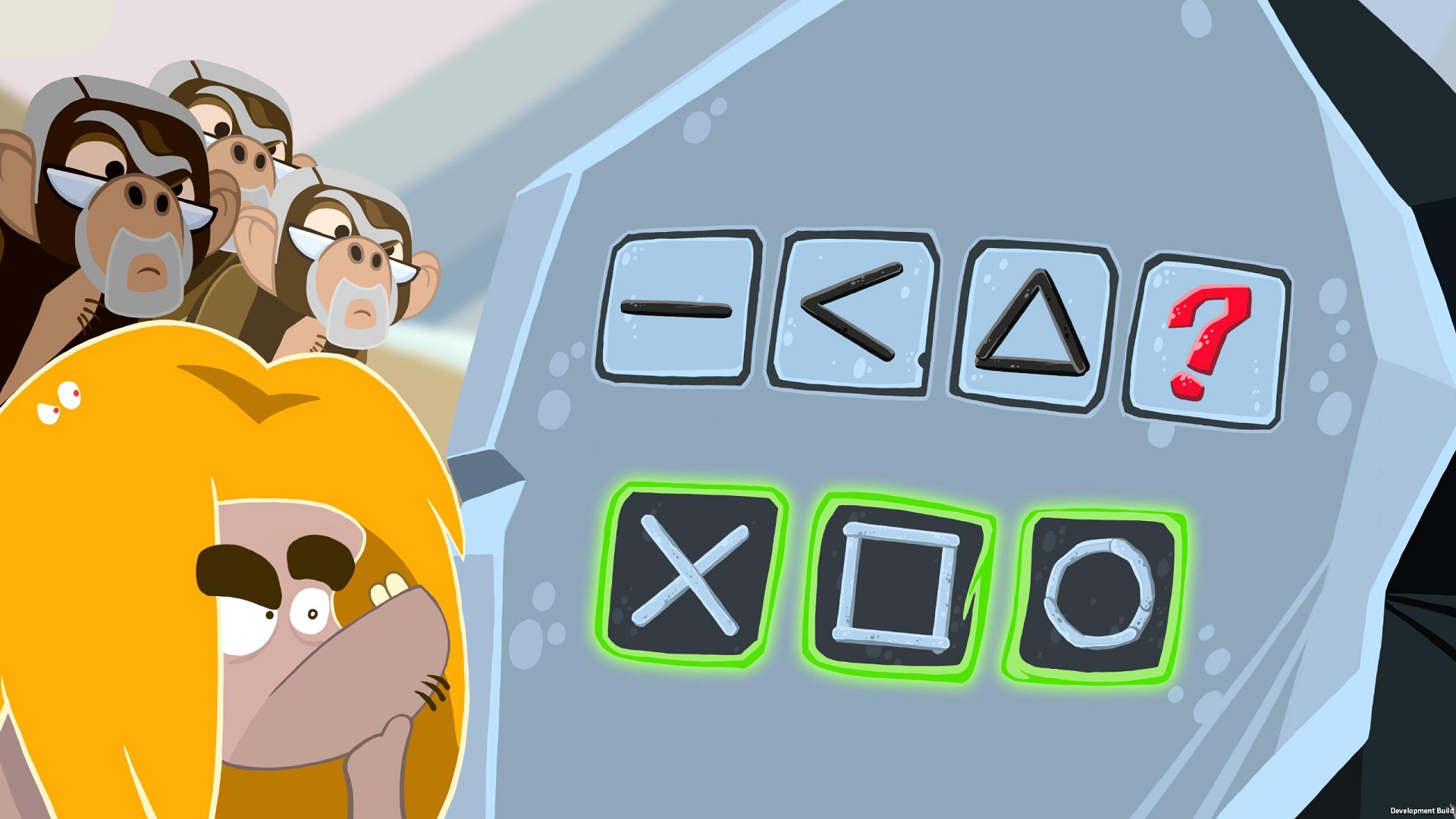
But out of all of the graphics, it’s the characters and beasties that deserve the lion’s share of the praise, with the lead character being a particular stand out. Ungh is drawn with a huge underbite and protruding chin that’s stereotypical of cartoon Neanderthals, but his goofy facial expressions and exaggerated actions make him stand out from any character I’ve seen in a similar vein. His animations are particularly well done and are so expressive that I was never left confused about how Ungh was feeling, or at an interaction between two characters, despite the game playing out without a single line of spoken dialogue. It’s an impressive use of body language and cartoon zaniness to get the point across, for sure. While there’s a whole host of weird and wonderful creatures to be discovered on Ungh’s journey, I particularly enjoyed the psychedelic tree, the surreal stitched up dinosaur and the monkey professors, who all had me grinning from ear-to-ear at the complete strangeness of it all!
Much of the puzzle solving in Fire is relatively straightforward if you’ve played point-and-click games in the past, but that isn’t to say that the game isn’t good fun. I had a great time playing through the ten levels on offer and the bizarre predicaments that Ungh found himself in made me laugh out loud on more than one occasion. That said, some of the solutions are a little on the random side and meant that there was more trial and error than I personally enjoy with puzzle games. There are some enjoyable puzzles throughout the game, there’s a level centred around H. G. Wells’ novella The Time Machine (a personal favourite of mine), which I found to be particularly excellent. There are lots of references to other time travel stories, including a very fun reference to the butterfly effect that’s worked into a puzzle really nicely.
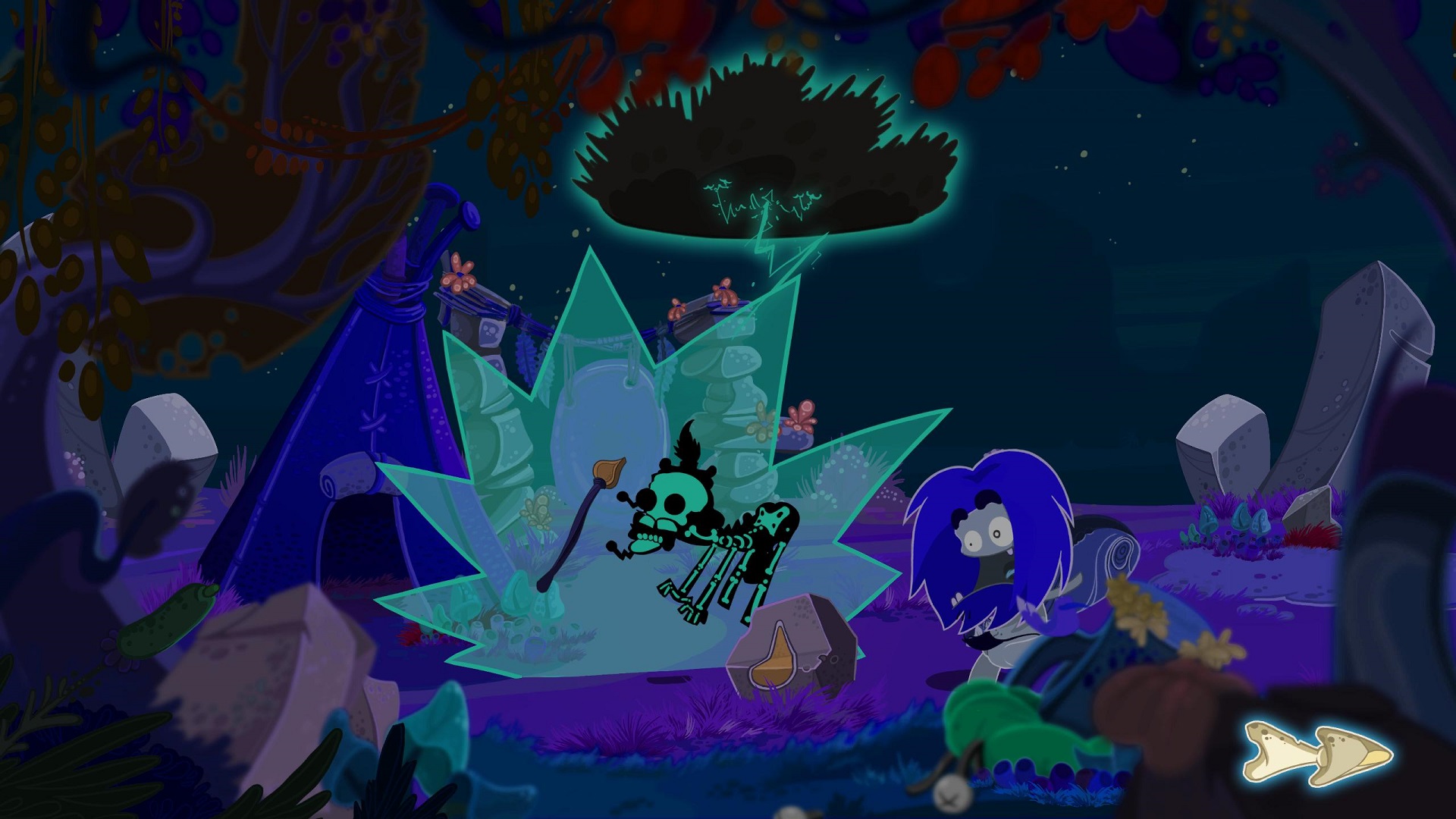
The biggest downside of Fire is quite simply the length of the game – it feels like no sooner have the puzzles begun to catch fire that they’ve burned out entirely, as you’ll have the main story completed within just a couple of hours. Finding all of the optional coins might extend the play time a little bit, but I still found myself wanting more by the time I was done. Granted, that’s hardly the worst feeling for a game to leave you with, but I felt it’s a shame that there weren’t more adventures to be had with old Ungh and his wacky buddies.
Overall, Fire: Ungh’s Quest is a great point-and-click puzzler that keeps you warm for a couple of hours, but doesn’t have the longevity to hold back the icy fingers of boredom through the night and see you safely to the morning. Dedicated fans of the genre might find Fire a little on the simple side, but I genuinely think that the playful style, well thought out -if not especially taxing- puzzles, and the short run time would make it a great entryway into point-and-click puzzle games for players who are unfamiliar with the genre. More like a firework than an inferno, Fire is pretty and will certainly make you smile, but is sadly over all too soon.
In the interest of full disclosure, the publisher provided VGamingNews with a copy of the game in order to conduct this review.


